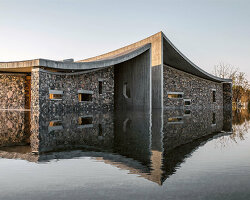Studio Zhu Pei’s International Conference Camp in china
Amidst the mountains and ravines on the western outskirts of Jingdezhen, China, lies a transformative space, the Zijing International Conference Camp, designed by Studio Zhu Pei. Originally, this area was a natural mountain valley covered in dense forests, but it was later transformed into an extended field through human intervention. Thus, the project aims to explore a new approach to redefine the relationship between the natural environment and human ingenuity, through an imposing concrete expression that dissolves into its scenery, fostering a sense of unity between people, nature, and architecture.
The design of the camp draws inspiration from the traditional wisdom of the local community, emphasizing the connection between the buildings and the surrounding environment, including villages, farmland, and mountains. This approach reflects the historical use of the land, where people sought to sustainably extract resources from nature while maintaining the vitality and stability of the area.

looking from the square of Conference Hall Ⅱ to Conference Hall Ⅲ ©Su Shengliang
Zijing embraces Adaptable Design & Environmental Integration
Informed by the local villages’ relationship with nature, the project by Studio Zhu Pei (see more here) reimagines the conventional ‘conference center’ by dispersing its functions into separate ‘conference and camp’ buildings, blending them into the mountainous landscape. These buildings are designed to be adaptable, allowing them to efficiently harness natural elements such as air and light. The goal is to create a structure that integrates with its setting, fostering an open, porous, and fluid space, that serves as both a meeting hub and a conducive environment for contemplation and discussion.
To create a cohesive group of buildings that can adapt to the site’s complexity while embodying simplicity and authenticity in their structural design, the project centers on a specific architectural concept. This concept involves the repetition and modification of inverted single-curved arches, which carry a strong sense of structural tension, to form roof units, a reminiscent of the traditional Chinese double-eave architectural style with a contemporary twist.

conference building ©Zhang Qinquan
The distinctive, flexible curves seen in ancient building eaves and the gently sloping roofs created by raised frames are faithfully represented in the extensive curved surfaces of the Zijing International Conference Camp. These curved surfaces are layered and create a dynamic rhythm throughout the space. The staggered arches play a significant role in manipulating the refraction and diffusion of natural light, working in conjunction with skylights and curtains. This intricate interplay allows for optimal utilization of natural light and ventilation within the indoor spaces, effectively maximizing their potential.

the entrance of a guest building ©Su Shengliang
Zhu Pei’s ‘Architecture of Nature’ philosophy is evident in this project through the concept of ‘incomplete integrity’. This design philosophy seeks to merge architecture with the natural environment, and it is executed in three dimensions. In the horizontal dimension, the settlement’s layout is deliberately irregular along the natural contours, fostering an organic connection with the environment. This integration eliminates the traditional boundaries between the building and the natural surroundings, creating a harmonious blend.
In the vertical dimension, the structural system maximizes the advantages of mountainous terrain. It allows for stacking structures along the natural inclines, taking full advantage of the local topography. To adapt to the region’s climate, shaded spaces are strategically incorporated. Meeting rooms of various sizes are interconnected by corridors, walkways, and platforms beneath protective eaves. These wide eaves offer shade and protection from rain, creating comfortable shaded areas during Jingdezhen’s hot summers.

the lobby of Conference Hall Ⅲ ©Su Shengliang

interior space on the second floor of Conference Hall Ⅱ ©Studio Zhu Pei-Wang Junqi

interior space of Conference Hall Ⅲ ©Su Shengliang
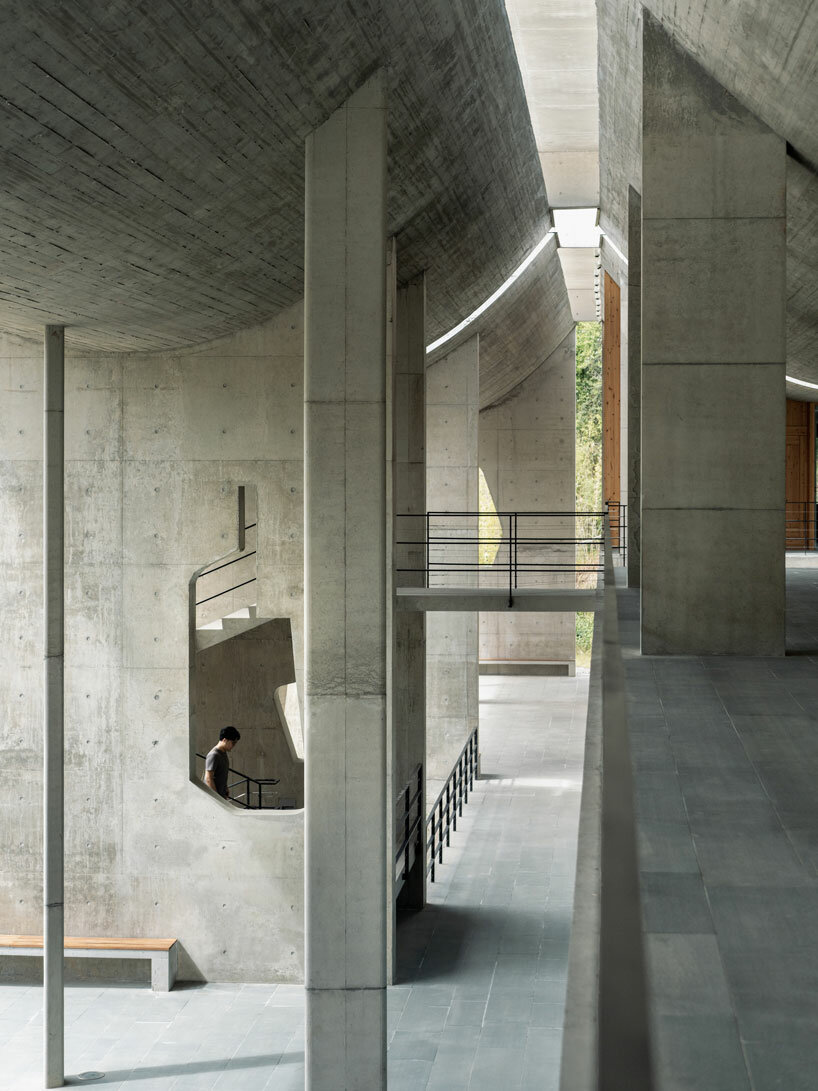
the colonnade space and the second floor platform of Conference Hall Ⅱ ©Zhang Qinquan

gazing between positive arch and reverse arch buildings ©Su Shengliang

night view of the guest building ©Su Shengliang



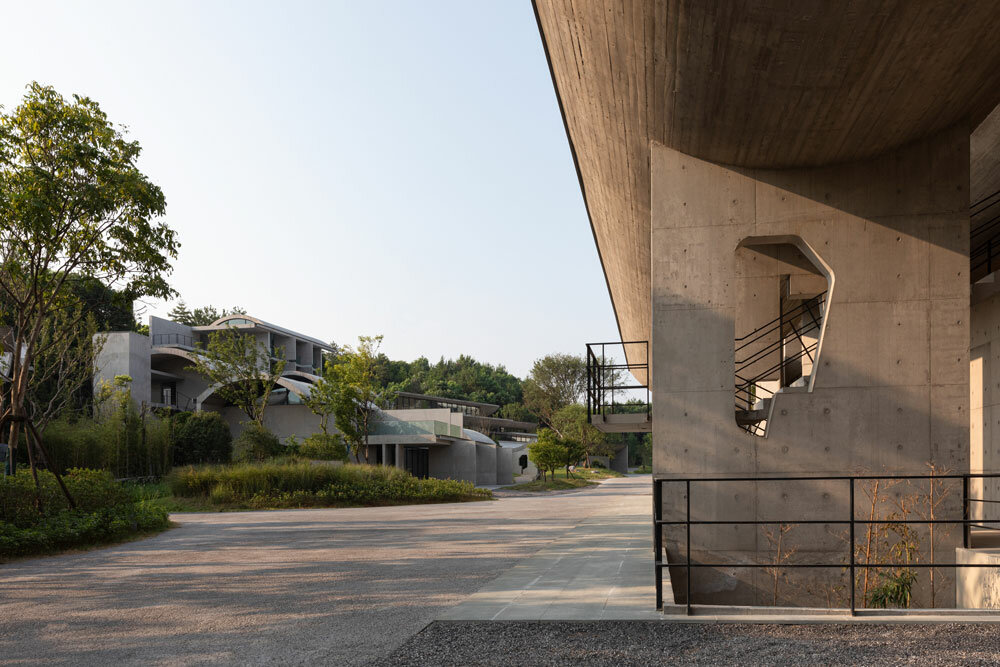

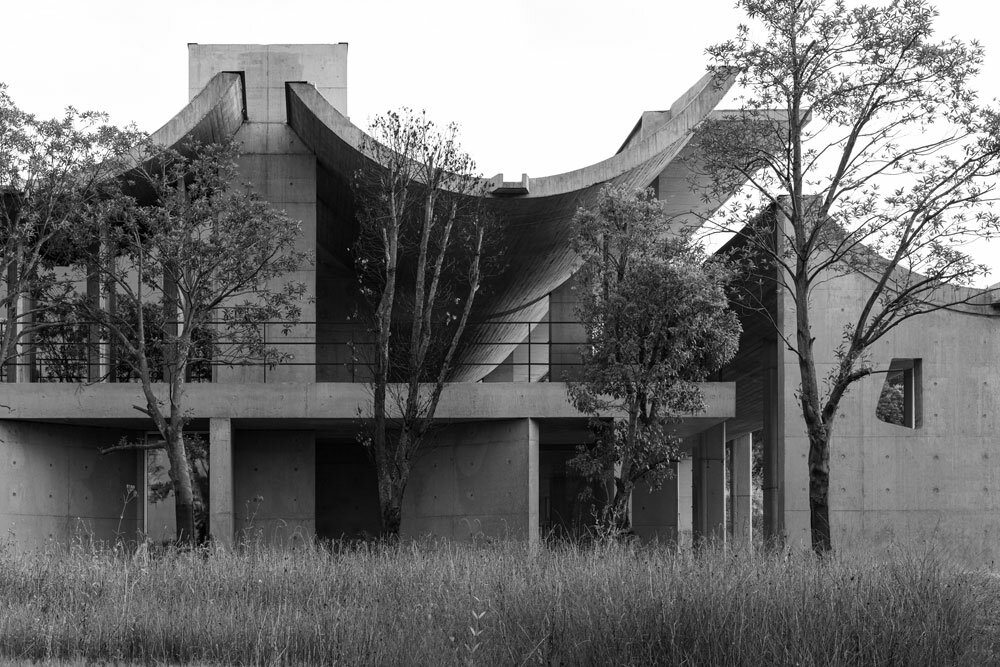

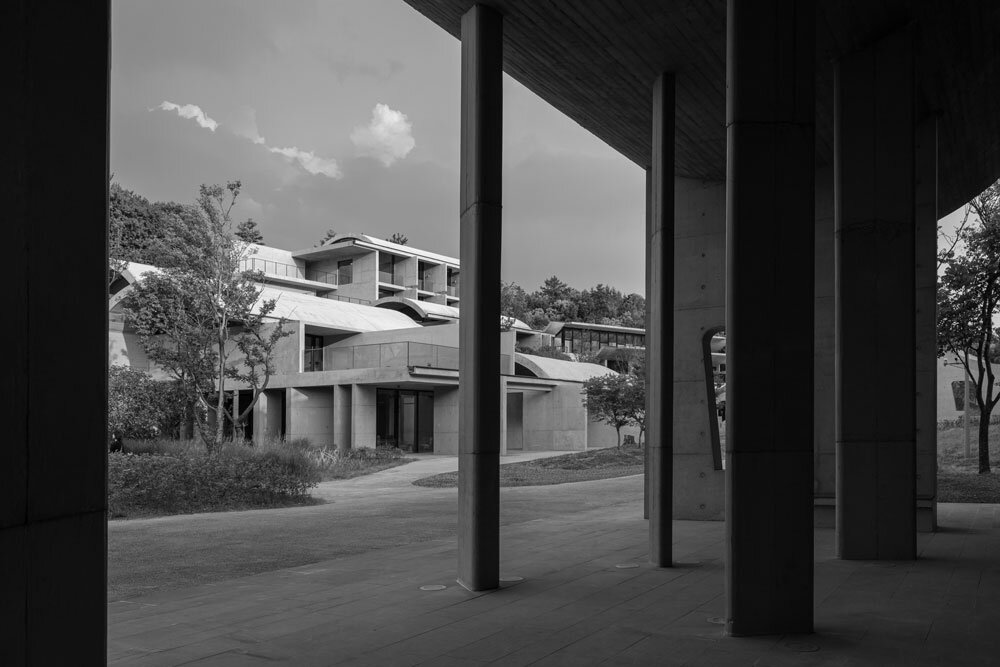





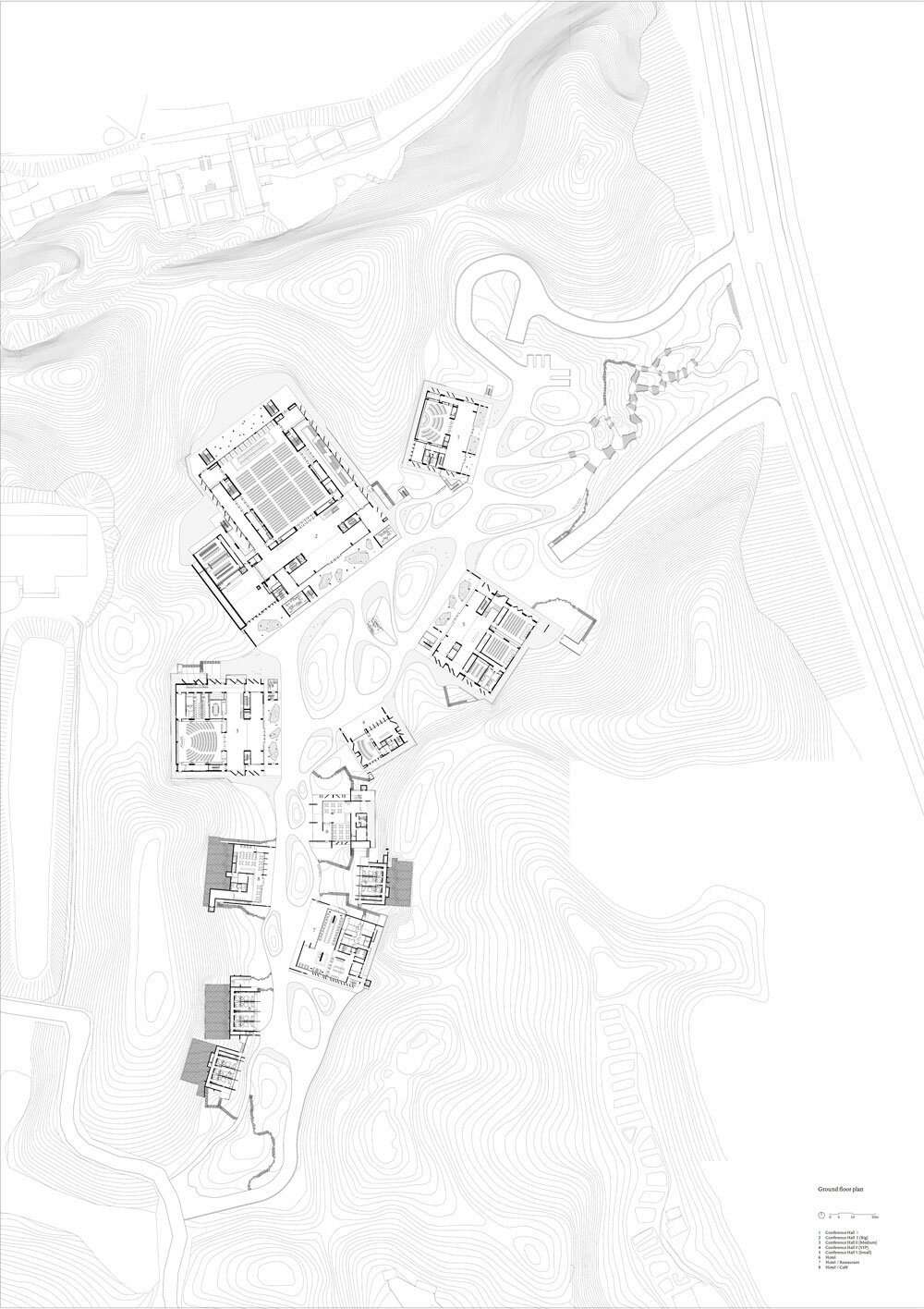
project info:
name: Zijing International Conference Camp
architecture, interior and landscape design: Studio Zhu Pei
design principal: Zhu Pei
design team: Mauro Pagliaretti, Zhang Shun, Liu Yian, You Changchen, Liu Ling, Jiming, Chen Yanhong, Han Mo, Cong Xiaoyu
cooperative design in structural, MEP, landscape, and interior: The Design Institute of Landscape & Architecture China Academy of Art
façade consultant: King Glass Engineering Co., Ltd.
lighting consultant: Ning Field Lighting Design Co., Ltd.
acoustic consultant: Hangzhou Zhida Architectural Science and Technology Co., Ltd.
client: Black Cat Group
main contractor: China Construction First Group Corporation Limited, Huajiang Construction Co., Ltd. of China Construction First Group
construction subcontractors: Fair Faced Concrete: Beijing Yihuida Concrete Construction Engineering Co., Ltd., Shenzhen Qingyi Decoration Engineering Co., Ltd
façade: Beijing Hongyi Fengcai Decoration Engineering Co., Ltd.
conference system: Beijing Yitaimudan Electronic Engineering Co., Ltd.
location: Jingdezhen, Jiangxi
design period: 2018-2020
completion year: 2022
site area: 71,544sqm
total floor area: 40,107sqm
structure: Reinforced concrete arch beam + shear wall
photography: Su Shengliang
material suppliers:
wood doors: Beijing Xinli Decoration Engineering Co., Ltd.
stone flooring: Wanyuan Hongrun Tengfei Stone Development Co., Ltd.
wood flooring, wood veneer, acoustical ceilings: Beijing Quncheng Construction Group Co., Ltd.
elevator: Jiangxi Yong’an Elevator Engineering Co., Ltd.
lighting: Jingdezhen Tianhan Lighting Co., Ltd.









